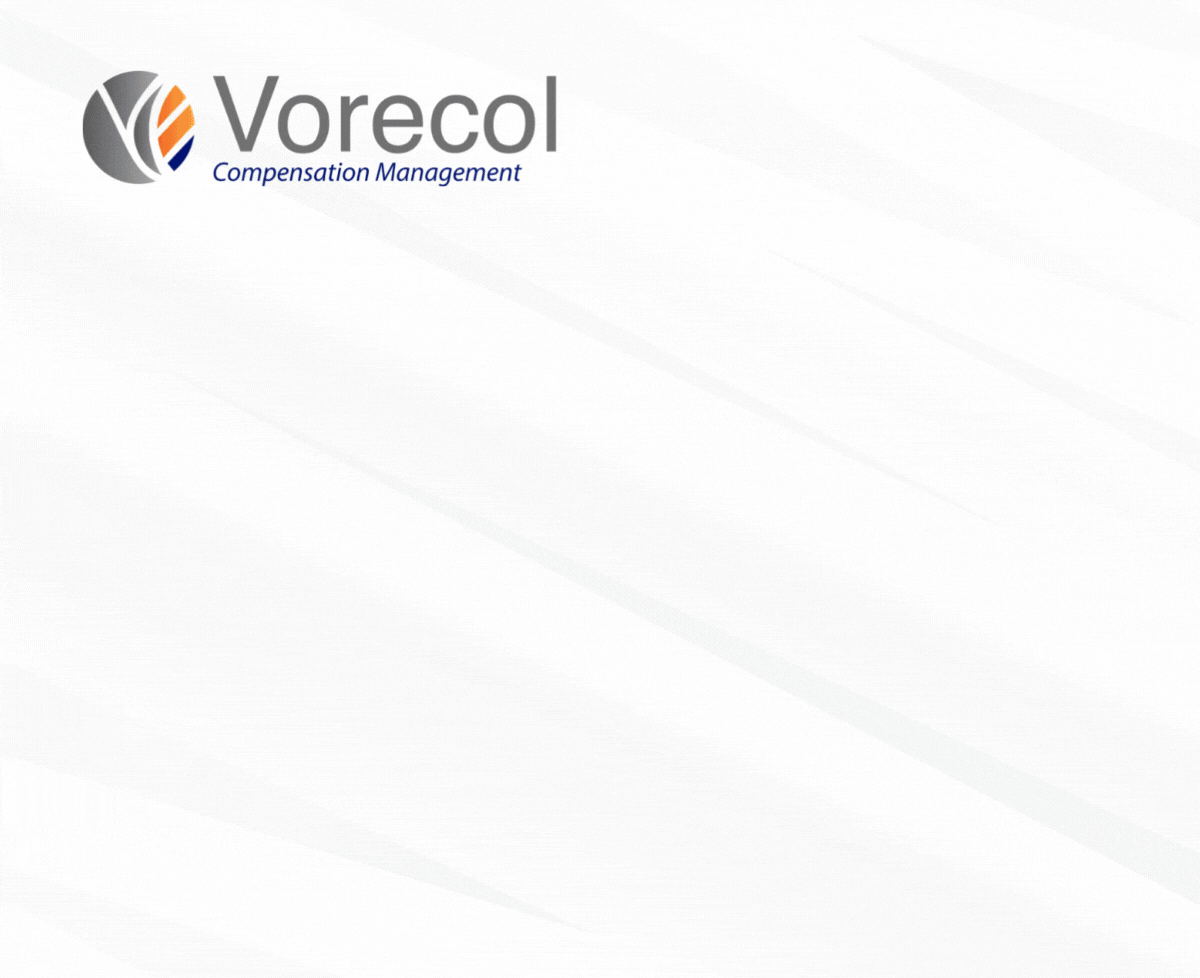The Role of Flexible Benefits in Employee Retention and Attraction in a Competitive Job Market

- 1. Understanding Flexible Benefits: A Comprehensive Overview
- 2. The Impact of Flexible Benefits on Employee Satisfaction
- 3. Attracting Top Talent: How Flexible Benefits Make a Difference
- 4. Flexible Benefits vs. Traditional Compensation: A Comparative Analysis
- 5. The Role of Personalization in Flexible Benefits Packages
- 6. Case Studies: Successful Implementation of Flexible Benefits
- 7. Future Trends in Flexible Benefits for Employee Retention and Attraction
- Final Conclusions
1. Understanding Flexible Benefits: A Comprehensive Overview
Flexible benefits programs, often called "cafeteria plans," allow employees to select the benefits that best fit their individual needs, creating a more personalized and engaging workplace experience. Take the case of the multinational software company, Adobe. By implementing a flexible benefits system, Adobe found that 87% of employees reported being satisfied with their benefits package. This approach not only enhances talent retention but also attracts diverse talent, as individuals feel their unique circumstances are acknowledged. Data from the Society for Human Resource Management indicates that 63% of employees are more likely to remain with their employer if offered flexible benefits, emphasizing the power of customization in the employee value proposition.
In another compelling example, Salesforce, a leader in customer relationship management, has specially curated health and wellness options that adapt to employees' varying lifestyles and familial needs. This level of flexibility has led to a 35% increase in engagement with the benefits program. For companies seeking to implement similar initiatives, it is advisable to conduct thorough employee surveys to understand the specific needs of the workforce. Additionally, regular communication about the available options is crucial; as seen with Accenture’s annual review sessions, education about benefits can vastly improve utilization. In summary, introducing flexible benefits can significantly enhance employee satisfaction and loyalty, but thoughtful implementation and clear communication are key to success.
2. The Impact of Flexible Benefits on Employee Satisfaction
In the heart of a bustling city, Brookfield Properties, a leading real estate services company, transformed its employee benefits program by introducing flexible benefits tailored to individual needs. This initiative resulted in a 25% increase in overall employee satisfaction scores within a year. Employees praised the program for allowing them to choose benefits that resonated with their personal lives, from childcare support to mental health resources. The story of Sarah, a single mother who was able to allocate her benefits towards childcare services, became a testament to the positive impact of flexibility. By listening to employees and adjusting offerings to their unique situations, organizations can foster a workplace where individuals feel valued and empowered.
Similarly, a study conducted by the Society for Human Resource Management (SHRM) revealed that companies offering flexible benefits experienced a 30% decrease in staff turnover. One such example is Accenture, a global consulting firm, which revamped its benefits package to include wellness programs, remote work options, and personalized financial planning. Employees shared stories of stress relief and improved work-life balance, citing the significant positive impacts on their productivity and engagement levels. Organizations can follow suit by conducting regular surveys to assess employee preferences and by providing a diverse range of options that cater to the varied lifestyles of their workforce. By adopting a flexible benefits strategy, companies not only enhance job satisfaction but also cultivate a loyal and motivated employee base.
3. Attracting Top Talent: How Flexible Benefits Make a Difference
In the fiercely competitive landscape of talent acquisition, companies like Netflix have mastered the art of attracting top talent through flexible benefits. Instead of traditional perks, Netflix offers a unique approach where employees can design their own benefits package, tailoring options to their lifestyles and preferences. This flexibility resonates deeply, particularly with millennials and Gen Z workers, who prioritize work-life balance and personalized solutions. A 2021 survey indicated that 80% of employees consider the flexibility of benefits as a deciding factor when choosing an employer, showcasing the growing importance of adaptability in attracting top talent.
Similarly, Adobe has embraced a flexible benefits model that aligns with its innovative culture. The company introduced a "Benefit Bank," allowing employees to allocate funds towards various benefits such as wellness programs, professional development, or additional vacation days. This initiative not only empowers employees but also fosters loyalty and engagement within the workforce. For organizations looking to draw in top talent, it's crucial to consider the diverse needs of employees. Conducting regular surveys to gauge employee satisfaction and preferences, coupled with transparent communication about available options, can significantly enhance an employer's attractiveness in today's dynamic job market.
4. Flexible Benefits vs. Traditional Compensation: A Comparative Analysis
In the heart of its bustling headquarters, the multinational company Johnson & Johnson decided to overhaul its employee benefits program, moving from a traditional fixed compensation model to a flexible benefits system that could be tailored to individual needs. This change was inspired by a study showing that 77% of employees valued personalized benefits over a higher salary. The results were telling: employee engagement scores skyrocketed by 30%, and retention rates improved dramatically. Stories from employees like Maria, a working mother who opted for more childcare support instead of low salaries, illustrated how flexible benefits not only enhanced personal satisfaction but also fostered a sense of loyalty to the organization.
Conversely, consider the experience of the traditional insurance giant Aetna, which continues to rely heavily on its fixed compensation strategy. While many of its employees appreciate the security that a predictable paycheck brings, the company found that turnover rates reached 23% among younger employees seeking more personalized approaches towards their benefits. This situation highlights the necessity for organizations to adapt to evolving workforce expectations. Companies looking to implement similar changes could benefit from conducting surveys to understand employee preferences, adopting pilot programs to test flexibility, and ensuring transparent communication about the options available. By doing so, they can create a healthier work environment that aligns with the diverse needs of their workforce.
5. The Role of Personalization in Flexible Benefits Packages
In the world of employee benefits, personalization has become a key player in enhancing employee satisfaction and retention. Take the story of Spotify, for instance. The company successfully implemented a personalized flexible benefits package by allowing employees to choose from a variety of options tailored to their individual needs, such as wellness programs, additional vacation days, or educational stipends. According to a report from Benefits Pro, 70% of employees working for companies that offer customizable benefits are more likely to report higher job satisfaction. This case exemplifies how personalization not only meets diverse needs but also fosters a culture of inclusivity and care, crucial in today’s competitive job market.
Organizations looking to create a more personalized benefits package can learn from well-established practices. Netflix, renowned for its unique employee culture, allows staff to adjust their benefits dynamically based on their life stages—be it parental leave or student loan assistance. This approach has resulted in a remarkable 93% employee retention rate, indicating that personalization leads to long-term loyalty. For companies aiming to implement similar strategies, conducting regular surveys to assess employee needs can provide invaluable insights. Additionally, leveraging technology to streamline the selection process ensures that employees can take full advantage of the offerings without feeling overwhelmed. Personalizing benefits is not just a trend; it's a strategic approach that can elevate an organization’s commitment to its workforce.
6. Case Studies: Successful Implementation of Flexible Benefits
In 2018, a leading financial services company, Fidelity Investments, made headlines when it implemented a flexible benefits program that allowed employees to tailor their compensation packages according to their individual needs. Rather than a one-size-fits-all solution, Fidelity offered options ranging from student loan repayment assistance to wellness programs and dependent care subsidies. As a result, employee engagement scores surged by 25%, affirming that when employees feel valued and understood, they are more likely to commit to their organization. This successful initiative exemplifies how flexible benefits can lead not only to improved workplace morale but also to increased retention rates, as 90% of employees reported higher job satisfaction within the first year of implementation.
On the other side of the industry spectrum, tech giant Spotify adopted a similar approach, rolling out a flexible benefits system that includes everything from home office stipends to personalized learning budgets. By acknowledging that employees have diverse preferences, Spotify created an environment that is both inclusive and empowering. This strategy paid off; within a year, they noted a staggering 40% boost in employee productivity. For organizations seeking to emulate such success, it is imperative to first survey employees to identify their key needs and desires. By actively engaging staff in the design process of their benefits, companies can ensure that their offerings align closely with employee expectations, fostering a culture of trust and collaboration.
7. Future Trends in Flexible Benefits for Employee Retention and Attraction
In an era where talent is the lifeblood of any organization, companies like Netflix and Salesforce have mastered the art of flexible benefits to enhance retention and attraction. Netflix, for instance, has cultivated a unique culture characterized by trust and autonomy, offering employees an array of benefits that can be tailored to individual needs, such as extended parental leave and generous vacation policies. This approach has proven effective, resulting in a staggering employee turnover rate of just 3%, compared to the industry average of 13%. On the other hand, Salesforce has integrated wellness benefits into its core strategy. The company provides employees access to mental health services and fitness programs, contributing to a remarkable 90% employee satisfaction rate. These examples illustrate that understanding employee preferences and adapting benefits accordingly can lead to both retention and a robust employer brand.
As organizations navigate this ever-changing landscape, it’s vital for them to implement a comprehensive benefits strategy. For those aspiring to replicate the successes of companies like Netflix and Salesforce, an effective recommendation would be to conduct regular employee surveys to gauge preferences and satisfaction levels. This data can provide a roadmap for customizing benefits packages based on the unique demographics and values of the workforce. Furthermore, organizations should consider implementing technology platforms that allow employees to select their benefits from a wide range of options, ensuring they feel empowered and engaged. By prioritizing flexibility and personalization in benefits, companies can not only enhance employee morale but also position themselves as competitive players in the talent market.
Final Conclusions
In conclusion, flexible benefits play a crucial role in both attracting and retaining talent in today’s competitive job market. As employees increasingly seek personalized work arrangements that align with their unique needs and lifestyles, organizations that offer a robust system of flexible benefits can differentiate themselves from their competitors. These benefits not only foster increased job satisfaction and loyalty among staff but also cultivate a positive organizational culture that values employee well-being. By aligning benefits packages with the evolving preferences and priorities of the workforce, companies can create a more engaged and committed team, positioning themselves for long-term success.
Furthermore, the implementation of flexible benefits goes beyond merely addressing individual preferences; it also serves as a strategic tool for enhancing company reputation and brand image. In an era where job seekers prioritize employer value propositions, organizations that showcase their commitment to employee flexibility are likely to attract top-tier talent. As businesses continue to navigate the complexities of a dynamic labor market, investing in flexible benefits will remain a pivotal strategy for fostering a resilient and motivated workforce. Ultimately, the ability to adapt to the diverse needs of employees will not only enhance retention rates but also enable companies to thrive in an increasingly challenging environment.
Publication Date: August 29, 2024
Author: Psico-smart Editorial Team.
Note: This article was generated with the assistance of artificial intelligence, under the supervision and editing of our editorial team.
Leave your comment
Comments
Request for information
Fill in the information and select a Vorecol HRMS module. A representative will contact you.



